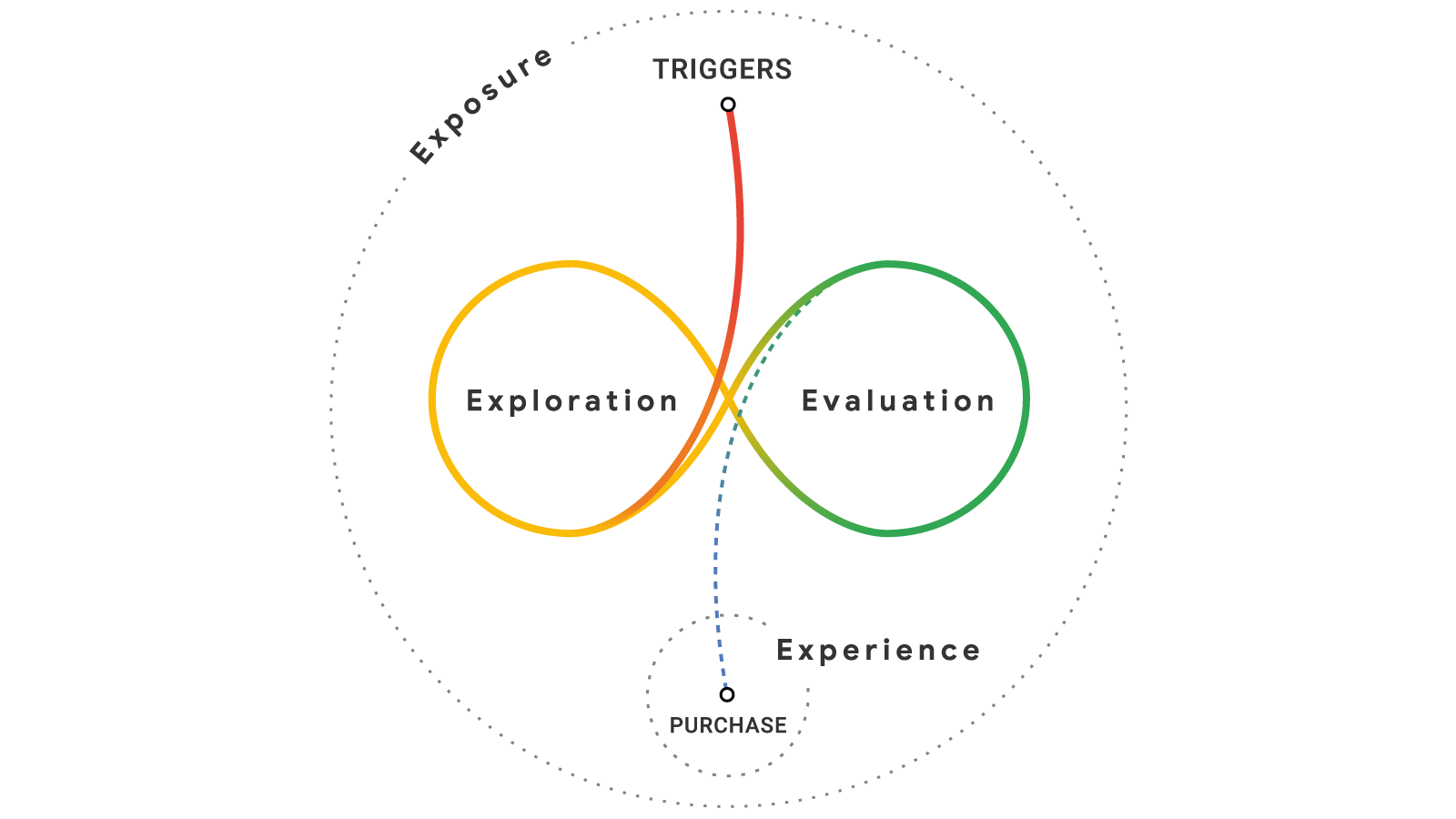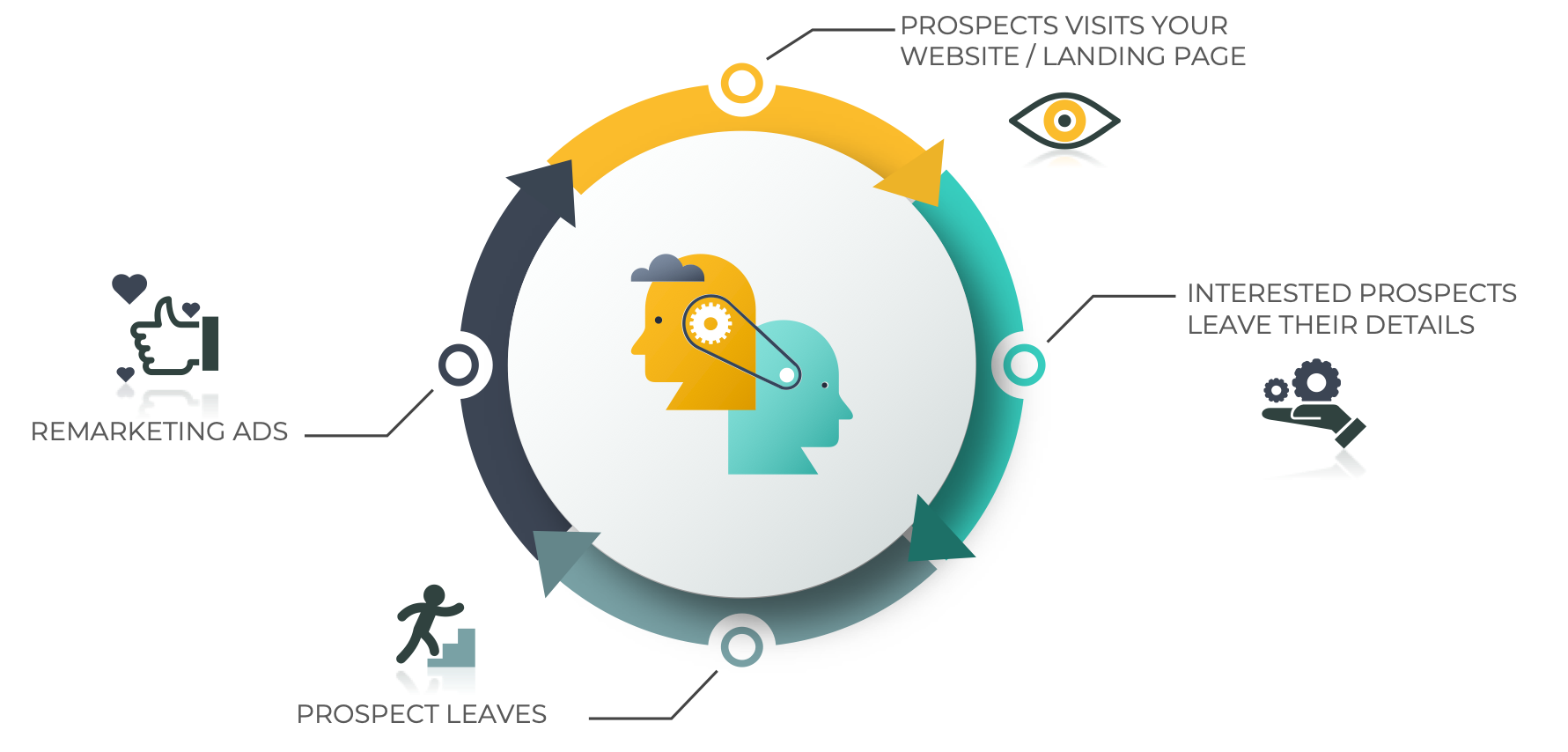By Rohit Arora, general manager, Liwa Content Driven

Google’s insight team and the Behavioral Architects came up with new research laying its focus on “the ‘messy middle’, a space of abundant information and unlimited choice (visually depicted with the infinite sign in the image below) that shoppers have learned to manage using a range of cognitive shortcuts.”

That’s true, if we think about it, between the linear “path to purchase” or “purchase funnel”, there’s a lot more going on between triggers/awareness and purchase – limited offers, unused/expiring loyalty points, discount codes, credit card promos, push notifications from e-commerce sites, aggregator sites, review sites, comparison sites, group-buying sites, interest groups on social media, moving in and out of multiple e-commerce channels, going back for a second and then a third look and so on.
The Google study found there are six cognitive biases that charge people with an unprecedented speed and scale in decision making:
- Category heuristics – key product specs that simplify decisions
- Power of now – the longer you wait, the weaker the proposition becomes
- Social proof – the power of others’ recommendations
- Scarcity bias – as availability decreases, desire increases
- Authority bias – trust and expertise can sway decisions
- Power of free – a free, even unrelated, gift with a purchase is a motivator
Video marketing
Within this context, videos have been playing an important role due to their inherent nature to transfer information faster than any other content type. As per the dual coding principle (neuroscience), audio cues give users the ability to retain information of about 10%, on the other hand, with both audio and video cues, users retain as much as 68% of the information. No surprise, 92% of marketers say that video is an integral part of their marketing strategy in 2020. It has grown from 78% in 2015 (HubSpot)
Here are a few video-marketing strategies that can help navigate the messy middle:
Product demo videos
Although they can be a little advertising-ish, they tend to be more functional, highlighting product features, benefits and uses – more effective to close a sale in the journey of exploration and evaluation.
According to Amazon, having a product video is one of the best possible ways to optimize the listing. It’s best to get frontload your USP and keep it succinct especially in an e-commerce listing scenario, e.g.
- Quechua:
- Waterdrop:
- NutriBullet:
That said, product videos can be longer too, especially in a high-involvement category, e.g.
- Redsbaby Skip:
And, making them interesting improves likeability, e.g.
- Ikea Place App:
Product demo videos statistics:
- 97 per cent of global online retail sessions end without a purchase (Statista)
- 96 per cent find videos helpful when making purchase decisions online (Animoto)
- 73 per cent are more likely to purchase after watching videos explaining a product or service (Animoto)
- 71 per cent say watching video left them with a positive impression of the brand (Animoto)
Explainer videos
At times a new business idea/concept, its features and benefits need a better explanation to comprehend and appreciate the potential. As the name suggests, explainer videos explain this in a compelling way. They’re informative and a bit advertising-ish, effective at an early conversion stage. It’s mostly placed on the website/landing page, and more interesting, the better, e.g.
- Dubai Land Department Blockchain:
- Amazon Launchpad:
- Slack:
- Dollar Shave Club:
Explainer videos statistics:
- A video on a landing page can increase conversions by as much as 80 per cent (Eyeviewdigital)
- People spent on average 2.6x more time on pages with video (Wistia)
- 4x as many people would rather watch a video about a product than reading about it (Animoto)
- Video drives a 157 per cent increase in organic traffic from SERPs (Wordstream)
Consumer testimonial videos
They act as a social proof reinforcing the claims made by the brand, adding a layer of reassurance. It optimizes digital marketing efforts by giving that extra push for conversion on your website, social channels and especially on the landing page. Since it’s human-to-human, authenticity is key, e.g.
- Adobe x Limbitless:
- HubSpot x Surveymonkey:
- Liberty Insurance:
- Salesforce x Burberry:
You may have noted that within the B2B scenario, it can help both brands. Beyond videos, it’s worthwhile to consider positive star ratings and reviews and badges (e.g., an authorized seller, safe checkout, etc.)
Testimonial videos statistics:
- 92 per cent hesitate to hit the buy button if the product lacks reviews entirely (FanandFuel)
- 92 per cent trust a recommendation from a peer and 70 per cent trust a recommendation from someone they don’t even know (Nielsen)
- 91 per cent of millennials trust online reviews as much as friends and family (BrightLocal)
- 79 per cent of people have watched a video testimonial to find out more (Wyzowl)
Case study videos
It’s often utilized by businesses to demonstrate how their offerings have been successfully implemented by their customers. It also helps to show how their product/service can be used. Peppered with storytelling, they can bring their business proposition to life, establishing credibility and supporting SEO.
E.g.: Aggreko has a dedicated page for case-studies for the main verticals, each supported by videos:
- Mining: https://www.aggreko.com/en-au/sectors-and-services/mining
- Events: https://www.aggreko.com/en-pg/sectors-and-services/events
Yes, there’s an element of customer testimonials if the client is featured within the narrative, however, case study videos tend to be more data-driven, following the problem-solution-result format, e.g., https://www.hubspot.com/case-studies
Case study videos statistic:
89 per cent of B2B marketers consider customer testimonials and case studies to be the most effective kinds of content in converting buyers (Fronetics)
Retargeting ads
Video remarketing is not just impactful, but also a cost-effective way to remind your prospects, who have already interacted with your website and YouTube videos. This is how it works:
While the bounce rates vary from the type of website or industry, as a thumb rule, 26-40 per cent is considered as excellent, 41-55 per cent average and 56-70 per cent above average. Doesn’t mean that they are not interested, it’s just messy middle.
Banners are the most used format; however, YouTube outperforms on greater engagement and visits frequency; it’s a perfect platform coupled with display networks that support video banners.
Video remarketing ads can be of any duration and any of the video types discussed above can be served as YouTube ads, but my personal favourites are the shorter 5-10 seconds ads – as the intent is just a nudge. You’ll note that these are not the cutdowns, but designed to fit the format, e.g.
- Singapore Tourism
- Los Angeles:
- New York:
- London:
- Toyota Yaris:
- Airbnb:
Retargeting statistics:
- Website visitors who are retargeted are 43 per cent more likely to convert (Criteo)
- 3 out of 5 notice and consider ads showing products they viewed from another page (eMarketer)
- CTR of a retargeted ad is 10x higher than the CTR of a typical display ad (Wishpond)
Videos in email marketing
Embedding video to your email marketing is like adding rocket fuel to email opens, CTR and conversions.
With reducing attention spans and impatience to read, it’s often seen to be used either as a feature on top or part-way through the message, e.g.

Video email marketing statistics:
- Video in emails can improve CTR by up to 300 per cent (Biteable)
- Interactive email letters improve click-to-open rate by 73 per cent (GetResponse)
- Adding video content to emails can potentially reduce opt-outs by 75 per cent. (Backlinko)
IN CONCLUSION:
Unquestionably there’re many other tactics and formats at play to influence the messy middle and having a good video marketing strategy can meaningfully add value to your prospect’s decision making, thereby having a positive overall impact on your business – by revenues, as well as brand equity.









